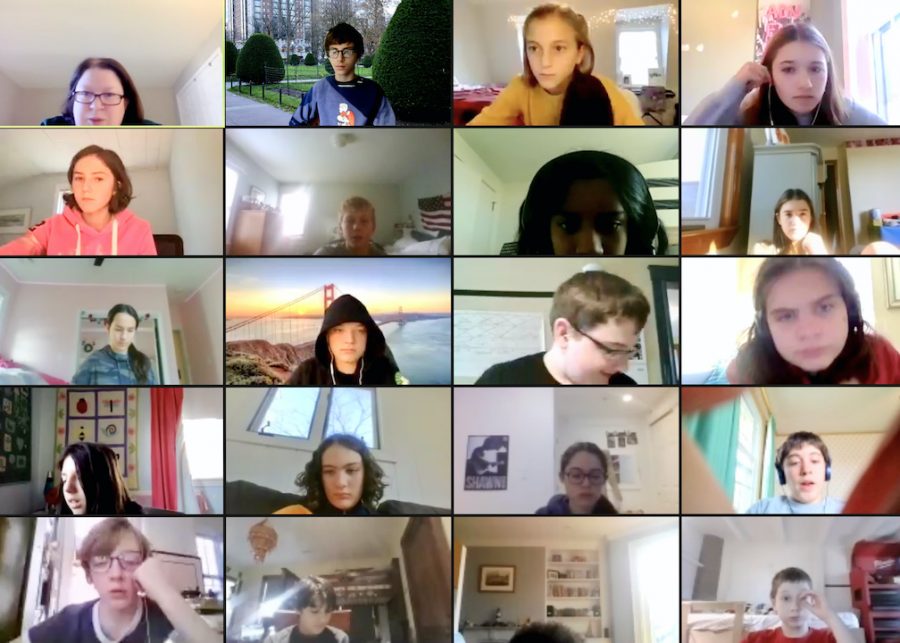Sixies Online? Not a Recipe for Social Six-cess
The simple question, “Do you mind if I sit here?” has begun numerous lifelong friendships, but this year, the question has been transformed into, “Do you mind turning on your camera?”
The COVID-19 pandemic has created a major challenge within the BLS community: a lack of interpersonal connection. In particular, with the entire school being virtual, the sixie class must overcome the unique hurdle of being introduced to everything through screens and Zoom chat boxes.
Although the administration has created various social events such as “Super Sixie Saturday” and peer mentoring, more can and should be done to benefit the social and mental wellbeing of sixies.
The most prominent issue is the sixies’ lack of willingness to communicate and turn on their cameras in class. Just one student turning their camera off creates a chain reaction of other students following suit, disincentivizing participation in class and other activities. What seems like a fairly insignificant action makes building up trust exponentially more difficult.
Ms. Caroline Callum, an English 7 teacher, says, “Sometimes, I’ll get to know the screensaver better than I even know what the student looks like.”
Students who dominate the conversation also take away from the class environment. When a student over-participates, other students opt-out and disappear from the ongoing conversation. This lack of engagement discourages academic participation in class, causing students to fall behind. It is also what stops friendships from forming.
Furthermore, sometimes teachers and administrators are reluctant to give sixies access to too many features in fear of taking away from learning time. Regarding whether chat boxes should be open to students, some teachers think Zoom chat boxes are distracting and have disabled the feature.
Sixies, however, still get to enjoy the Zoom chat in a few classes, the most prominent being Ms. Callum’s. Josephine Lorusso, a sixie student, says, “[Ms. Callum] keeps the chat open […]. Most of the people I’m friends with are from ELA class, because of what Ms. Callum is doing.”
The success of giving students access to chat boxes reveals we should implement more systems that are constantly accessible for sixies to socialize with their classmates.
Dr. Craig Sawchuk, a Mayo Clinic psychologist, states that, “There’s an opportunity for […] beneficial effects of being able to use technology to bring socialization to individuals rather than putting it on the individual to seek it out themselves.”
In short, we have an opportunity to take advantage of the unique circumstances to bridge time, location and other physical restraints.
For example, the school could set up a Zoom which students can join during lunch, increase the number of peer mentoring meetings or even create an online forum in which students can find others with similar interests.
The new environment and sheer size of our school can be intimidating for sixies, and this may make them reluctant to immerse themselves. Although increasing the number of accessible platforms may not guarantee participation from sixies, this should not deter the administration from trying: it is the first step in changing their mindsets and creating a change in the community.
Nevertheless, we ought to make an active effort to encourage greater social unity among the sixie class in order to improve not only their social but also their mental wellbeing. Dr. Sawchuk concludes, “We are social animals by nature, so we tend to function better when we’re in a community and being around others.” In the age of social distancing, this is even more important.







